Tristan Shaw's Blog, page 6
April 1, 2016
The Case of Juan Pedro Martinez Gomez, Europe’s Strangest Disappearance
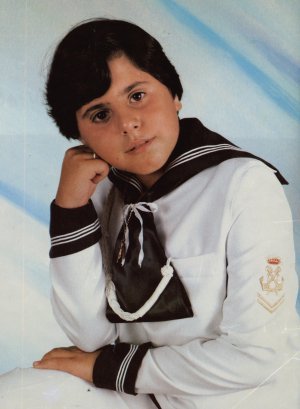
Juan Gomez was a 10-year-old boy in Spain who disappeared under mysterious circumstances in June 1986.
Europe’s strangest disappearance, as Interpol once put it, all began with an innocent road trip. Andrés Martinez was a truck driver who lived in the south of Spain in Fuente Alamo, Murcia. He sometimes took his wife Carmen Gomez and their 10-year-old son Juan Pedro on his trips. His latest job was to transport 20,000 liters of sulfuric acid far up north to Bilbao, a city in Spain’s autonomous Basque Country. Since Juan Pedro finished the school year with such good grades, his father promised that he could go along to the trip to Bilbao. Carmen would also go to keep an eye on Juan Pedro.
On June 24, 1986, the family picked up the truck in the city of Cartagena around 7 PM. By 6 in the morning, the truck had entered Somosierra, a mountain pass to the north of Madrid. Perhaps as a result of broken brakes, Andrés was speeding at this point at 140 km (86 mi) per hour. His driving became reckless in the mountains; without slowing down once, he broke off another driver’s car mirror and then bumped into another car from behind. After the car he rear-ended got out of his way, Andrés crashed head-on with a truck that had come down from the opposite direction. The crash caused his truck to overturn, spilling the sulfuric acid out onto the side of the road and covering the area with a toxic mushroom cloud.
When the authorities arrived, they had to quickly act to neutralize the acid before it leaked into a near-by river. After the area was cleaned up, they found two bodies in the crashed truck, those of Andrés and Carmen. Juan Pedro was missing, however, and it wouldn’t be until later in the day that the police even knew that he had been riding along with his parents.

Andres Martinez’s crashed truck.
Investigators later searching the truck found a tape of children’s songs and some clothes, but no actual sign of Juan Pedro. They checked beneath the truck and the sand and lime they used to neutralize the acid, yet still were unable to find any remains. Could he have been melted by the sulfuric acid? Chemists dismissed the idea. If Juan Pedro really did fall out of the truck and into the acid, he would have at least left behind some hair or nails on the scene. Instead, there was no evidence that he was in the truck or the area at the time of the crash.
The last anybody saw of the family before the crash was at a bar around 5:30. Andrés and Carmen ordered coffee, and Juan Pedro had some milk and a pastry. There was nothing to indicate that they were upset, and the waiter watched their truck leave from the parking lot. Examining the truck, investigators discovered that there was nothing wrong with Andrés’ brakes. Nobody could say why he was speeding so recklessly, but he was doing it by his own choice. Another strange detail was found in his tachometer; the instrument recorded that Andrés had stopped his truck 12 times as he went up the mountain during a period of 20 minutes. Other truckers said that stopping even once on the mountain pass was unnecessary, let alone a dozen times.
So why did Andrés feel the need to drive so fast and stop so frequently? The most popular theory is that Juan Pedro had been abducted, and that his father was chasing after him. Others suggest that Andrés was trying to run away from somebody. After he crashed, his pursuer might have kidnapped Juan Pedro before the police showed up. (It might seem unlikely that Juan Pedro would have survived the crash, but the driver in the other car did actually live.)

Picture of Carmen Gomez and Andres Martinez.
Moments before the crash, the man who Andrés rear-ended told police that he pulled off the road and was assisted by a foreign man and blonde-haired woman in a white van. The woman was allegedly a nurse and looked over the man’s injuries. Two shepherds in the area, neither of whom the police were able to trace, were said to have seen a white van pull up to Andrés’ truck after his collision with the other car. A man and blonde-haired woman went into the truck and took something out of it, possibly a package or Juan Pedro.
Some believe that the mysterious couple might have been drug traffickers. In 1987, the media reported that traces of heroin had been found in the trailer where Andres was carrying the sulfuric acid. There were rumors that Andrés had done some drug smuggling before, but his family later disproved this with the help of a private detective. If drugs really were involved, perhaps drug traffickers approached Andrés that day and asked him to transport something for them. If he refused, the traffickers might have kidnapped Juan Pedro as ransom. On the other hand, Andrés could have voluntarily accepted because he didn’t want any trouble.
A second theory speculates that there was no drug smuggling or kidnapping at all. Juan Pedro might have survived the crash and left the truck. While looking for help, he stumbled upon the foreign man and blonde woman. The couple tried to drive him to a hospital, but he died on the way there. Another variation of this theory proposes that Juan Pedro was burned by the acid and tried to go to the river to soothe his burns. Considering the gigantic search for Juan Pedro after it was discovered that he was missing, it seems likely he would have been found had he wandered around the area and collapsed or died somewhere.
Juan Pedro’s family believes that he is still alive. In May 1987, a man in Madrid met a blind old woman and a boy who looked like Juan Pedro. The woman was an Iranian refugee looking for the American embassy. She said that she and her family had been in Spain for only 6 months, yet the boy she was with spoke fluent Spanish with an Andalusian accent. (Juan Pedro came from a part of Spain where the people have a similar accent.) When the man complimented the boy’s strong Spanish, the old woman got nervous and wouldn’t explain how he knew the language so well. Although the man didn’t recognize the boy at the time, he was later certain that it was Juan Pedro.
Check out my book “Mexico’s Unsolved Mysteries: True Stories of Ghosts, Monsters, and UFOs from South of the Border” for more interesting mysteries of the Spanish-speaking world. You can buy the book on Kindle here.


March 24, 2016
The Alien Cyclops of Sagrada Familia
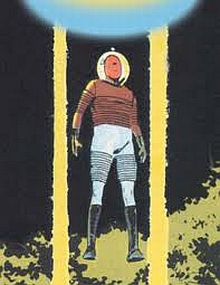
Comic book depiction of the Sagrada Familia Cyclops, an alien encountered by three boys in Brazil in August 1963.
On August 28, 1963, 7-year-old José Marcos Gomes Vidal went to play with his friends Fernando and Ronaldo Gualberto at their home in Sagrada Familia, a poor neighborhood in Belo Horizonte, Brazil. Around 7 PM, after eating dinner, the boys went out to the backyard to wash a coffee strainer. While Fernando stood a small distance behind him, José dipped his head and arms into a barrel to collect some water. (I believe Ronaldo was hanging around the side of the house, away from the other two boys.) Suddenly, Fernando noticed a glow coming from the top of an avocado tree. When he looked up, he saw a UFO hovering above the tree’s branches.
The craft, which was spherical and had a pair of antennas on top, was completely transparent. It held four human-like passengers sitting inside, one of whom sat in front of a machine that appeared to be a control panel. The passengers were about six feet tall and dressed in spacesuits. They all four had only one eye. Three of them were thin and bald, while the other looked like an overweight woman with blonde hair.
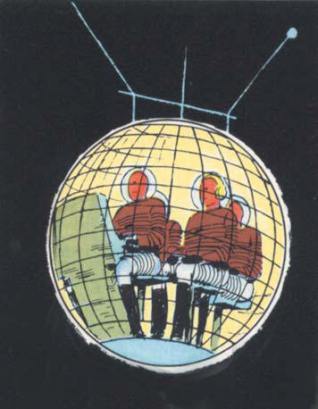
As Fernando gazed at the sight in awe, the UFO shot out two rays of yellow light. One of the cyclopes then appeared between the lights, slowly floating down onto the ground. Once his boots touched the earth, the creature began to walk toward José, who was completely unaware of what was happening since he was still collecting water. Worried that the cyclops was going to abduct his friend, Fernandos panicked and tackled José. José fell to the ground, and Fernando got back up and faced the cyclops. Now all three boys were aware of their visitor.
Instead of moving any farther, the cyclops moved his head and made hand signals. Its mouth moved and spoke a few sounds that was nothing like the boys ever heard before. The creature then turned around and stared back at the UFO. Fernando, spotting a brick on the ground, picked it up and aimed it at the cyclops. The cyclops suddenly faced the boys again and shot Fernando’s hand with a yellow light from a triangular crest on his chest. Fernando dropped the brick, and all three of the boys became calm and frozen.
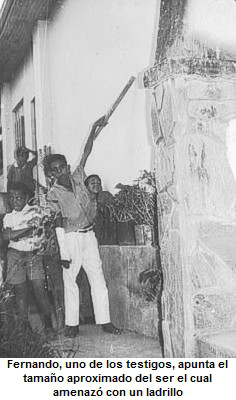
A newspaper photo of Fernando using a stick to show how tall the cyclops was.
The cyclops spent the next few minutes talking to the boys in his language. The boys didn’t understand anything that the cyclops said, but he sounded like he was serious. After pointing one of his fingers at the moon, the cyclops began to walk back toward the UFO. (One source places Fernando’s attempt to hit the creature with a brick at this later point.)
As the cyclops walked away, José asked if he would ever come back. He shook his head affirmatively, plucked a plant from the ground, and then waved his hand at the UFO. The UFO shot out two rays of yellow light again, and the cyclops slowly floated back up into the vehicle. As the boys continued to watch, the UFO flew eastward and disappeared out of their sight.
After the UFO was gone, a wave of fear settled over the three boys. José ran into the Gualbertos’ house and hid under a bed. Fernando and Ronaldo were also badly spooked, and told their mother María José about what happened. She sent a neighbor girl to fetch her husband, Alcides, from the bar. When Alcides returned home to check the backyard, he found large footprints, like those of a boot, near the water barrel. José and his friends reportedly never saw the cyclopes again. While the case was at one point investigated by a Brazilian ufologist, it has remained mostly unknown to the wider world.
Did you find this article interesting? Be sure to share it on your social media and leave me any comments, questions, or theories you might have in the comments section.


March 15, 2016
The Betty Andreasson Abduction
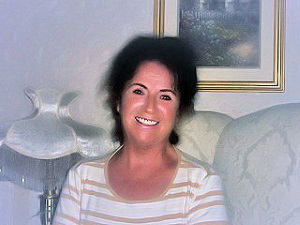
In January 1967, Betty Andreasson was abducted by a group of aliens who told her that worshipped Jesus Christ.
Until January 25, 1967, Betty Andreasson was a pretty ordinary housewife living in South Ashburnham, Massachusetts. That night, around 6:30 PM, Betty was working in her kitchen when her house’s power went out for a brief second. As Betty rushed to her front room to check on her seven children, a red light suddenly flashed through the kitchen window and caught her father’s attention. When Betty’s father went up to the window to check out the source of the light, he saw a group of small gray aliens apparently hopping toward the house.
Once they reached Betty’s home, the aliens floated through the kitchen door and put everybody except Betty into a state of suspended animation. To show Betty that her family was all right, the aliens snapped her 11-year-old daughter Becky back into animation. Becky told her mother not to worry, and then the aliens froze her again. While communicating with Betty by telepathy, the aliens took her outside to a silver spacecraft. This smaller vehicle took off and entered a mothership.

A drawing of the Andreasson aliens from one of the five books Raymond Fowler wrote about the case.
Over the course of four hours, Betty was subjected to some medical experiments and a surgery which removed a tracking-device that had been put in her nose in an earlier encounter that happened in 1950. During her abduction, the aliens told Betty that they worshipped Jesus Christ. They claimed that the Second Coming would happen soon, and then they took Betty to a room where she talked to a tall being she would later call “The One”. After meeting The One, Betty was taken home and had her memory wiped clean. Her family was unfrozen, and aside from Becky, would forget everything they saw that night.
It wasn’t until years later, in the 1970s, that Betty would remember what happened to her. In 1975, Betty wrote a letter about her experience to J. Allen Hynek, a well-known astronomer and UFO investigator. Hynek had little interest in Betty’s incredible story, but a hypnotic session was eventually organized by a group of investigators in 1977. After more than a dozen sessions and some other tests, Betty and Becky were able to unravel what happened to their family that night in 1967. Betty also recovered memories about some incidents in 1944, 1949, and 1950, and the hypnotist, Raymond Fowler, soon came to believe that he was once abducted by aliens too.
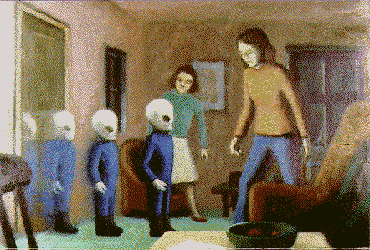
In 1979, Fowler turned the exhaustive notes taken of Betty’s experiences into a book called The Andreasson Affair. By that time, Betty was living in Florida with two of her daughters after a divorce from her husband. After her case became publicized, she met a man named Bob Luca, who also claimed to have some abduction experiences. (It seems like everybody Betty comes into contact with realizes they once had an abduction experience.) Betty and Bob were soon married, and their subsequent experiences have provided for four more books by Raymond Fowler. They are both still alive and active in the UFO community.
Due to the hundreds of pages of research that went into investigating Betty Andreasson’s experiences, her story has long been regarded by enthusiasts as one of the more credible abduction cases. There are plenty of troubling details and problems with her case, however, and I don’t just mean the part about the aliens practicing a 2,000-year-old religion whose holy book doesn’t even mention life on other planets.

A sketch of the spaceship Andreasson went on-board.
As pointed out by Dr. Aaron Sakulich, of The Iron Skeptic, Betty’s description of her abductors is strange and inconsistent. Over the years, Betty went from describing the aliens’ eyes as white with pupils to being entirely black like the aliens in Close Encounters of the Third Kind. The uniforms the aliens wore also don’t make much sense. According to Betty, they wore heavy boots, but what would have been the point since the aliens apparently floated everywhere? Furthermore, hypnosis sessions and “recovered” memories are notoriously unreliable and should not be taken as serious proof that an abduction actually happened.
In February 2007, Betty and Bob Luca’s son Robert Jr. announced that the Andreasson Affair was a hoax. In a 2,000 word email available on UFO UpDates, Robert Jr. claimed that his father was a compulsive liar who had drinking problems, while his mother needed “serious psychological help” and had “serious issues.” According to Robert Jr., Betty had been experiencing emotional shock because two of her sons had earlier died in a car accident. After meeting her second husband, Betty would write about every dream she had as though it were an abduction, and Bob encouraged her and even manipulated investigators into believing the story.
At the end of his email, Robert Luca Jr. had this to say about his parents: “These two people have used the ufo society for years and only to gain book sales, money and own self satisfation of feeling as if they are in the public. They give people out there with real and true stories a big black eye!”
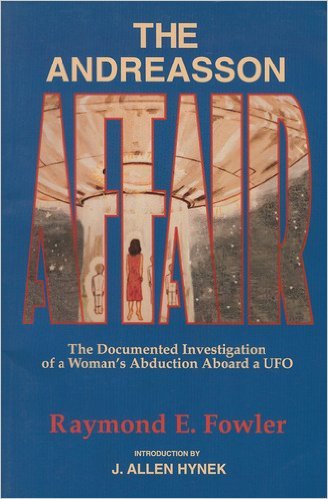
The Andreasson Affair, the first of five books about the Betty Andreasson case written by Raymond Fowler, is currently the only book still in print.
I believe Robert Jr. had much more to say on his website, Luca Land, but this site is no longer available. Naturally, his accusations came as a great shock, and Betty’s defenders slammed him as a liar incapable of using spellcheck. (As you can see in the quote above, he wasn’t particularly strong on his grammar and spelling.) The official Andreasson Affair website has an open letter from Bob Luca rebuking his son’s claims. According to the elder Luca, his son was estranged from the family and struggled with drugs and alcohol. He also announced that his son was now deceased, although he didn’t specify the causes.
Personally, I have no idea whether Robert Luca Jr.’s claims were legitimate. But his comment about Betty’s emotional state is interesting and deserves some attention. From an interview on the UFO Case Book, Betty had this to say about how her experience and the publicity affected her family:
“Yes, many things changed in my family. My father passed on, my ex husband disappeared, my two sons died in an auto accident, my mother came to live with us, I moved to Florida with her and my two youngest daughters. I was told not to speak to any reporters. I had to sell my home, the children had to attend other schools. My whole life, and my family had changed and went through some very difficult times.”
Did you find this article interesting? Be sure to share it on your social media and leave me any comments, questions, or theories you might have in the comments section.


March 11, 2016
The Albino Ghost of Montebello Castle
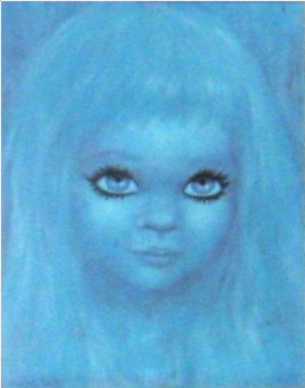
Azzurrina is the nickname of an albino ghost girl who’s said to haunt Italy’s Montebello Castle.
“Azzurrina”, an Italian word meaning “little blue”, is the nickname of a young girl who’s said to haunt the Castle of Montebello in Emilia-Romagna, Italy. According to legend, Azzurrina was born Guendalina Malatesta, the daughter of a 14th century nobleman. Unlike the rest of her dark-haired family, Guendalina was an albino who had white hair and pale skin. Since albinos were widely feared and hated during the time, Guendalina’s mother tried dyeing her daughter’s hair black. The herbs she used didn’t work very well, however, and instead gave Guendalina’s hair a bluish tint, hence her nickname Azzurrina.
Because of her condition, Azzurrina’s parents were very protective of her. They kept her in the castle at all times, where she was guarded by two men, Domenico and Ruggero. As the story goes, there was a big storm on June 21, 1375. That night, Azzurrina was playing with a rag ball in a room in the castle. While Domenico and Ruggero were standing off somewhere else, they suddenly heard Azzurrina let out a terrible scream. The two guards then rushed to her room, but found no trace of the girl or the ball. Although they searched all over the castle and its grounds, nobody ever found Azzurrina’s body. It was as though she had vanished into thin air.

The area in Montebello Castle where Azzurrina disappeared.
One variant of the story says that Azzurrina had accidentally thrown her ball down into a open cellar where ice was stored. Another version claims that some invisible force grabbed the ball out of her hands and rolled it down into the cellar by itself. Regardless of what exactly happened, Azzurrina’s body and ball were never found. Her father, who was away in a battle during the time, had Domenico and Ruggero executed after he found out what happened. On the fifth anniversary of her disappearance, Azzurrina returned to the castle as a ghost. She has since re-appeared every five years.
Azzurrina’s bizarre story was passed down as an oral legend for more than 250 years before somebody decided to write it down. In 1620, it was recorded by a parish priest in a book about local legends and folklore. No copy of this book has survived to modern times, and some believe that the book might not exist at all. There is, in fact, no evidence that the story ever happened. Unless that priest’s book ever turns up, it wouldn’t be too far of a stretch to doubt that Azzurrina’s story originated as an authentic medieval legend either. Some have traced the appearance of the story only as far back as the 20th century.
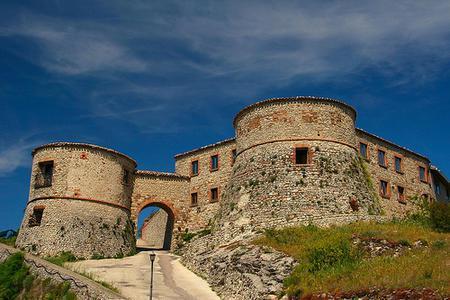
A picture of Montebello Castle.
Still, whatever its lack of authenticity, psychics and TV producers know a good ghost story when they hear one. On the anniversary of Azzurrina’s disappearance in 1990 and 1995, television crews allegedly captured the voice of a crying little girl on their recording equipment. In 2000, the child’s voice was heard again, this time crying and possibly calling for her mamma. A 2005 recording captured a single voice saying the name “Alosio”, and a group of voices chanting an old Hebrew word for the devil, “belial”. Another investigation in 2010 apparently captured nothing.
I’m not sure whether anybody tried recording Azzurrina on June 21, 2015, but Rimini Today posted a pretty interesting article about the case the day before the anniversary that year. According to Leo Farinelli, a man who spent 20 years researching the story and contacting Azzurrina through psychics, Guendalina was actually born in 1375 to Uguccione Della Faggiola and Costanza Malatesta. She was not actually albino, but blonde-haired and Nordic-looking. This made Uguccione suspect that the girl wasn’t his. Although Costanza insisted that she never cheated on her husband, there was a blonde-haired French guard in the castle who resembled Azzurrina. At the age of 8, Azzurrina disappeared from the castle in December 1383.
If Farinelli’s research is correct, perhaps the story got twisted and spiced up a bit over the hundreds of years it was passed down. The albino element, which Farinelli claimed was added by the priest who allegedly wrote the story down in 1620, might have covered up the real cause of Azzurrina’s disappearance: murder. Some have suggested that the palace guard was Azzurrina’s real father, and Uguccione arranged for her to “disappear” to save himself embarrassment. For those curious enough to investigate the story themselves, Montebello Castle is open to visitors for a slight fee nearly all-year round.


February 10, 2016
The Disappearance of Juliet Poyntz, a Former Soviet Spy
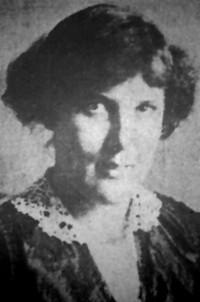
Juliet Stuart Poyntz was an ex-Soviet spy who disappeared in New York City in 1937.
Juliet Stuart Poyntz was an American activist who had been involved in left-wing circles since her early 20s. Initially, Poyntz was a moderate socialist who fought for labor rights and women’s’ suffrage, but she eventually moved further left and joined the Communist Party USA. Through the rest of the 1920s and 1930s, Poyntz moved up the party’s hierarchy and became involved with other internationalist communist groups. In 1934, Poyntz dropped out of politics and started working as an agent for the Soviet secret police.
Poyntz’s job was to collect information about scientific research in the U.S., but former Soviet spy and dissident Elizabeth Bentley claimed in her autobiography that Poyntz also tried recruiting other American communists for spy work. When Bentley first met Poyntz in 1935, Poyntz was allegedly helping in the organization of communist revolutionary groups in Italy. Poyntz, whom Bentley described as immoral and short-tempered, was looking for somebody to teach her Italian. Her real desire, however, was to recruit Bentley as a spy. Bentley wouldn’t have it though, and after being introduced to a sleazy Russian agent named “Smith”, thought that Poyntz was an anti-communist infiltrator.

Elizabeth Bentley was a spy for the Soviets from 1938 until 1945. She would later go public and expose two networks of American communists who were spying for the USSR.
Along with a male friend, Bentley went to Poyntz’s apartment and accused her of being a double agent right to her face. Two days later, Poyntz and a woman from the Communist Party USA showed up at Bentley’s apartment and threatened her if she ever decided to go public about what she knew. “Just remember one thing,” Poyntz said to her, “if ever you meddle in my affairs again, I’ll see that you’re taken care of. You’ll be put six feet under and you won’t come back to do any more talking!”
The next year, Poyntz went to Moscow and observed the first stages of the Great Purge. She ended up returning to America bitterly disappointed about the USSR. To the astonishment of her Stalinist compatriots, Poyntz became a vocal critic of the dictator and cut off her ties to the Soviets. Over the last few months of her life, Poyntz appeared increasingly anxious and frightened. On June 5, 1937, Poyntz received a phone call and then left her apartment in New York City. Although some weeks went by without anybody hearing from her, none of her friends were alarmed at her sudden disappearance. They assumed that she had left for Europe or was on another mission for the Soviets. By October, however, her friend and attorney Elias Lieberman had become concerned.
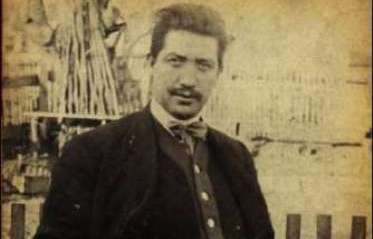
Carlo Tresca, a friend of Juliet Poyntz’s, believed that she was killed by the Soviet secret police.
Along with Poyntz’s apartment manager, Lieberman checked his friend’s apartment room and found that all her personal belongings were there. Her clothes were hanging untouched in her closet, and her passport and other important documents had been left behind. Lieberman tried conducting an investigation by himself, but decided to go to the police after a newspaper got wind of the story.
Naturally, there was a lot of fervor in the press about Poyntz’s former role as a secret spy. Her friends and other anti-Soviet communists believed that there was a connection. Before she disappeared, Poyntz had told them that she was planning to write a book that would expose other Soviet agents and Communist Party USA officials. According to Carlo Tresca, an American labor activist who would later die under mysterious circumstances himself, Poyntz met a former lover at the park the day she disappeared. The man, a newspaper editor and Soviet agent named Shachno Epstein, lured Poyntz away so that she could be abducted and taken to the USSR. Years later, in his famous book Witness, dissident Whittaker Chambers repeated a similar story, but said that Poyntz was forced into a car and then murdered to keep her quiet. Although she was ruled legally dead in 1944 by the New York Surrogate’s Court, what exactly happened to Juliet Stuart Poyntz has remained a mystery.





